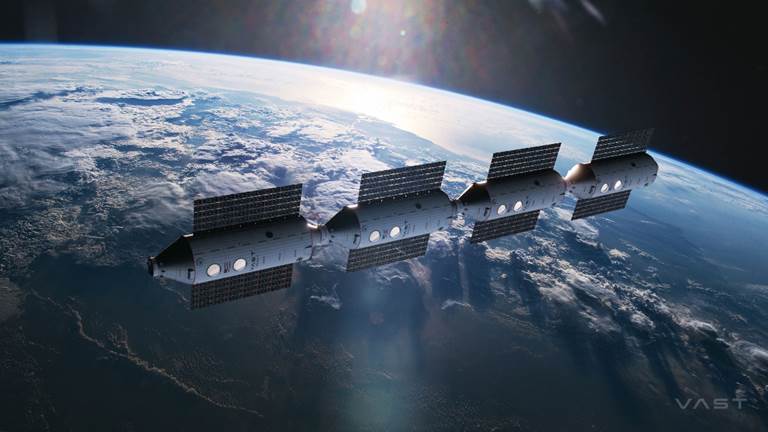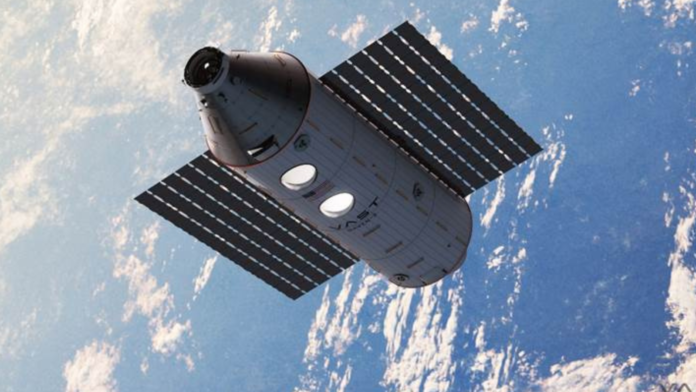The retirement of the International Space Station (ISS) is scheduled for 2030. With just six years left on the clock, private companies are vying to see their space stations enter low Earth orbit and become the world’s first ever commercial orbital laboratory.
At the 75th International Astronautical Congress (IAC), held in Milan, Italy, on Monday (October 14), US space technology company Vast threw its hat into the ring. The company’s CEO, Max Haot, unveiled Haven-2 as a proposed successor to the ISS. In an accompanying press statement, Vast describes the private space station Haven-2 as the “next step in the company’s vision to forge a path to long-term living and thriving in space.”
“Our focus this decade is to win the NASA Commercial LEO Destination (CLD) contract and build the successor to the International Space Station,“ Haot said in a statement. “To achieve this, we will first demonstrate our capabilities by building and operating the world’s first commercial space station, Haven-1, which will launch in 2025.”
Vast has developed Haven-2, a NASA-certified version of Haven-1, in a modular manner, allowing it to be built gradually in low Earth orbit, like its predecessor, the ISS.
If Haven-2 wins the lucrative NASA CLD contract in 2026, the company predicts the first Haven-2 module could reach low Earth orbit and be fully operational in 2028.
Related: U.S. space science could fall behind China if private successors to the ISS are delayed, Congress warns
Haven-2: Start small
Following the deployment of this 16-meter initial unit, Vast said it would build three more modules and launch them within a two-year period between 2030 and 2032. Each subsequent module will not only increase the volume of the commercial space station, but also improve space. Haven-2’s life support technologies and payload capabilities.
Port-2 may be a commercial venture, but it is being established with the potential for future international cooperation in mind. Collaboration has been critical to the success of the ISS.
“Port-2 is being designed for compatibility and ensuring international partners can seamlessly integrate into this next-generation platform,” Vast advisor and 23-year NASA veteran Andrew Feustel said in the statement. “This vision of global cooperation in space will create opportunities for scientific and technological advancements that will benefit new and current sovereign partners and industries around the world.”
One of the ISS’s key roles during its now-decreasing lifespan has been to allow scientists to conduct various experiments in the low-gravity or “microgravity” environment of low Earth orbit. Port-2 will aim to fulfill this role with its laboratory module, which Vast says will provide state-of-the-art laboratory facilities to support a wide range of microgravity research and manufacturing in space, meeting the criteria of NASA’s Basic Laboratory Capabilities.
When Haven-2 is completed, Vast said some of the other key features will include a 40-foot-wide dome window, which will allow astronauts from private and space agencies to view Earth and space and capture stunning images. Each module will also have its own 1.1 meter wide windows, bringing the total number of Haven-2 viewing ports to 16.

On the outside, Haven-2’s payload hosting capabilities include a robotic arm, visiting vehicle docking capabilities, an external payload airlock, and an extravehicular airlock for the spacewalks that have caused so much drama during the ISS’s lifetime. and amazement.
“Vast’s design is expected to surpass all other proposed space stations in orbit in terms of volume, functionality and operational efficiency,” the company concluded in the statement. “With unparalleled capabilities, Haven-2 will be the benchmark for the next generation of space stations and a low Earth orbit economy.”





